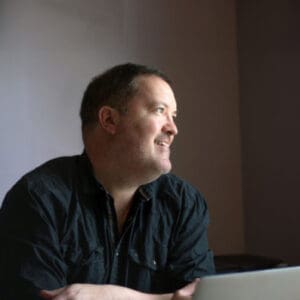In January 1955 W. Eugene Smith, a celebrated photographer at Life magazine whose quarrels with his editors were legendary, quit his longtime well-paying job at the magazine. He was thirty-six. He was ambitious, quixotic, in search of greater freedom and artistic license. He turned his attention to a freelance assignment in Pittsburgh, a three-week job that turned into a four-year obsession and in the end, remained unfinished. In a letter to Ansel Adams, Smith described it as a “debacle” and an “embarrassment.”
In 1957, Smith moved out of the home he shared with his wife and four children in Croton-on-Hudson, New York and moved into a dilapidated, five-story loft building at 821 Sixth Avenue in New York City’s wholesale flower district. 821 Sixth Avenue (between Twenty-eighth and Twenty-ninth streets) was a late-night haunt of musicians, including some of the biggest names in jazz—Charles Mingus, Zoot Sims, Bill Evans, and Thelonious Monk among them—and countless fascinating, underground characters. As his ambitions broke down for the epic Pittsburgh project, Smith found solace in the chaotic, somnambulistic world of the loft and its artists. He turned his documentary impulses away from Pittsburgh and toward his offbeat new surroundings.
From 1957 to 1965, Smith exposed 1,447 rolls of film at the loft, making roughly 40,000 pictures, the largest body of work in his career. He photographed the nocturnal jazz scene as well as life on the streets of the flower district, as seen from his fourth-floor window. He wired the building like a surreptitious recording studio and made 1,740 reels (4,000 hours) of stereo and mono audiotapes, capturing more than 300 musicians, among them Roy Haynes, Sonny Rollins, Bill Evans, Roland Kirk, Alice Coltrane, Don Cherry, and Paul Bley. He also recorded legends such as pianists Eddie Costa, and Sonny Clark, drummers Ronnie Free and Edgar Bateman, saxophonist Lin Halliday, bassist Henry Grimes, and multi-instrumentalist Eddie Listengart.
Also dropping in on the nighttime scene were the likes of Doris Duke, Norman Mailer, Diane Arbus, Robert Frank, Henri Cartier-Bresson, and Salvador Dalí, as well as pimps, prostitutes, drug addicts, thieves, photography students, local cops, building inspectors, marijuana dealers, and others.
The Jazz Loft Project, organized by the Center for Documentary Studies at Duke University in cooperation with the Center for Creative Photography at the University of Arizona and the W. Eugene Smith estate, is devoted to preserving and cataloging Smith’s tapes, researching the photographs, and obtaining oral history interviews with all surviving loft participants. The transferred recordings reveal high sound quality and extraordinary musical and cultural content, offering unusual documentation of an after-hours New York jazz scene.
About author
Sam Stephenson
Author
Sam Stephenson is a writer who grew up in Washington, North Carolina. He was 2010 and 2015 ASCAP Deems Taylor / Virgil Thomson Prize winner and a 2019-2020 Guggenheim Fellow in General Nonfiction. His books have been published by W.W. Norton, Alfred A. Knopf, and Farrar, Straus and Giroux
More